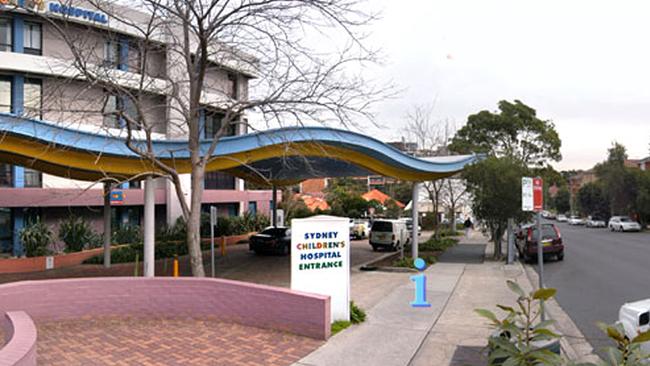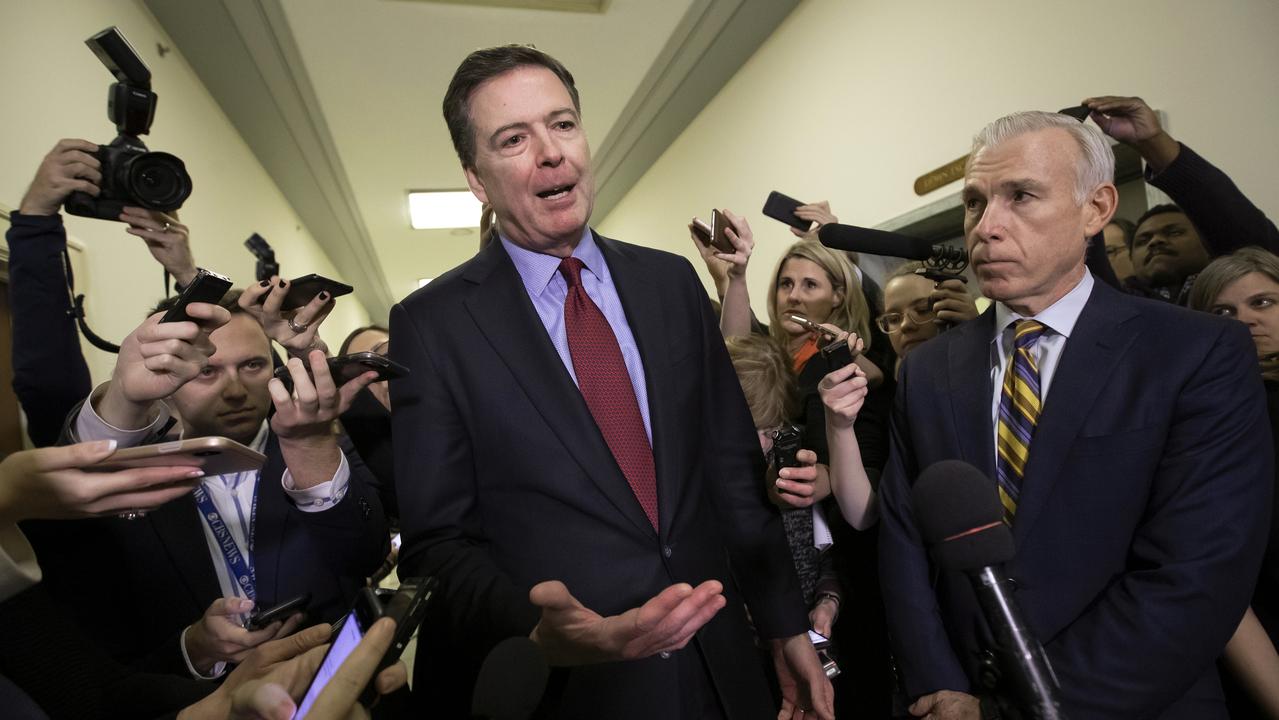The Cry of the broken-hearted
The fight over cardiac services for Sydney’s kids is getting nasty.

The road outside the Sydney Children’s Hospital in Randwick, in the city’s east, looks like a battle zone. The asphalt has been ripped apart to make way for the Berejiklian government’s light rail project, causing chaos for parents rushing to get help for their sick children.
Inside the hospital, a fierce battle is being waged that is harder to see. For the senior doctors involved, it is a fight for the institution’s future as a world-class hospital.
The doctors are deeply concerned that resources — especially cardiac services — are being shifted to the rival Children’s Hospital at Westmead, in Sydney’s west.
They warn the lives of critically ill babies are being placed at risk because cardiac services have been dramatically reduced at their hospital, and allege that Westmead-based doctors are trying to engineer a takeover of all paediatric heart surgery.
For almost a year, Randwick-based doctors have begged NSW Health Minister Brad Hazzard to intervene in the dispute, which also affects the Royal Hospital for Women on the same campus. But he has sat on his hands.
It’s a headache the government hardly needs; the Randwick hospital campus sits in the state seat of Coogee, which looks increasingly under threat from Labor at the state poll on March 24.
Labor has seized on the issue, vowing to restore paediatric cardiac services to Randwick if elected by providing an independent cardiac director and funding for another three full-time cardiologists and a cardiothoracic surgeon.
But Hazzard seems determined only to kick the issue down the road. Last year, an “independent expert facilitator” was appointed to review cardiac services at the two children’s hospitals. Then, last month, he told doctors there would be another review of the hospital network’s governance.
Randwick-based doctors say cardiac surgery is an essential component of the children’s hospital. The hospital treats 40 per cent of sick NSW kids who require hospitalisation and 80 per cent of critically ill children in the state who require emergency retrieval by ambulance or air.
The Royal Hospital for Women operates one of the state’s largest neonatal intensive care units, treating premature babies with complex health problems.
The government’s official policy is for cardiac surgery to occur at both children’s hospitals.
But the number of cardiac operations performed at Randwick has dropped by 66 per cent from 2015 to last year, according to doctors.
A paediatric cardiologist or cardiac surgeon has not been appointed to work full-time at Randwick for more than a decade. The hospital has just one heart surgeon, who is on call 24 hours a day, seven days a week.
At the same time, Westmead cannot cope with its increasing caseload, often because it does not have enough intensive care unit beds.
The Australian revealed last year that 134 children had their cardiac surgery cancelled at Westmead in a six-month period, delays that put their health at risk and placed enormous stress on their families. Children faced a 59 per cent chance of their heart surgery at Westmead being cancelled the first time they were scheduled there and 30 per cent were cancelled two or more times.
Randwick-based doctors said in a letter last year to hospital executives that a major proportion could have been operated on at Randwick but capacity there was being “wilfully under-utilised”.
They say their heart surgery results are as good, or better, than Westmead’s.
However, disturbing cases have emerged in which Randwick doctors say the health of critically ill newborns has been compromised because they have been transferred for surgery across town to Westmead — in some cases, they say, unnecessarily.
Last year, an extremely premature triplet was transferred from the women’s hospital at Randwick to Westmead for heart surgery. Randwick doctors say the surgery could have been safely performed at Randwick but instead the baby was separated from its siblings for nearly two months. The mother was from overseas and did not speak English.
The Westmead doctors argued their equipment meant the procedure could be carried out more safely out west. But Randwick doctors say if the equipment is seen as necessary it could be provided to its hospital, at relatively minimal cost.
Pregnant women carrying babies with identified heart defects are also being quietly directed shortly before giving birth to deliver their babies at Westmead, rather than at Randwick, in what doctors say is yet another bid to avoid heart surgery at Randwick.
The dispute over cardiac services stems back to 2012, when management of cardiac services across the hospitals was merged. Randwick doctors say the move has been an abject failure for them.
Westmead-based doctors were placed in charge of cardiac services at both hospitals.
Some Westmead-based doctors have argued paediatric cardiac surgery should be concentrated on just one site to achieve the best results and that heart surgery can be most safely conducted at their hospital.
Westmead medical staff council chairwoman Kathryn Browning Carmo last year said that “for eight million people we can’t run a roster with four surgeons working on two sites”.
Randwick-based doctors, however, warn that the cardiac services are crucial to ensuring the hospital’s future as a leading, comprehensive hospital and to support all specialties, including, for example, for children undergoing cancer or respiratory surgery.
Linked to the neighbouring University of NSW, it is also a major teaching hospital. Its paediatric intensive care unit achieves some of the nation’s best results and, without cardiac services, doctors warn, it will be diminished.
Australian Commission on Safety and Quality in Health Care chief executive Debora Picone backs the policy to maintain both children’s cardiothoracic surgical units.
“It makes eminent sense given the population size and spread of Sydney and also the service to the regions,” she tells The Australian.
Picone, a former nurse, is no stranger to the dispute. She was head of NSW Health when the management of the two children’s hospitals was merged in 2010, to form the Sydney Children’s Hospital Network.
She says maintaining two cardiac surgery units makes sense from “a clinical and safety” point of view.
For example, if there were an outbreak of infection at one of the hospitals, continuation of services to Sydney and the regions could be guaranteed, she says.
A global expert on hospital amalgamations, Carnegie Mellon University professor of economics and health policy Martin Gaynor, says there is evidence that for some kinds of treatments, including heart surgery, hospitals that handle higher volumes achieve better results.
But he says there is “no consistent finding” that consolidation improves the quality of care. He says there is also good research that suggests competition between hospitals can improve outcomes.
The calls for help from Randwick doctors to address the cardiac problems have become increasingly strident.
In June last year, the medical staff council declared a motion of no confidence in the directors of cardiac services for the two hospitals; in December, they sent an open letter to Hazzard calling for his urgent intervention; and last month they declared they had no confidence in the board and executives that run the two hospitals.
The doctors have been raising their concerns directly with Hazzard for almost a year.
Bitter turf wars between Sydney’s two children’s hospitals are nothing new. Since the hospital at Randwick was founded in 1964, there have been wars between doctors over the allocation of resources between the city’s competing children’s hospitals.
The dispute over cardiac services is part of a broader concern at Randwick that resources are being unfairly directed west.
The government committed $95 million last year to redevelop the Westmead children’s hospital, while a request for funding to shift the Randwick children’s emergency entrance, because of the intrusion of the light rail, has not been met.
Randwick’s ability to raise funds independently from wealthy eastern suburbs donors has also been affected since its charitable foundation was merged last May with the fundraising foundation for Westmead and other children’s services.
Their growing frustrations have led many doctors to argue the system is not serving the children who use their hospital.
Last Wednesday, the acting chairman of the medical staff council of the Randwick hospital, Angus Gray, wrote to all 156 members of the council canvassing options for “major transformations” to the way the hospital is run.
His letter says the executive “needs to explain why an autonomous cardiac surgery and cardiology department is not permissible” at Randwick.
He says the network has “not delivered” and “a good argument” could be made for it to be no longer run as part of the Sydney Children’s Hospitals Network.
Instead, it could be managed by the South Eastern Sydney Local Health District.
Meanwhile, medical staff at the Royal Hospital for Women, also dissatisfied with the management of their hospital, voted last week to write to the head of NSW Health, Elizabeth Koff, seeking an options paper for the women’s and children’s hospitals at Randwick to be run together.
Hazzard says it is up to doctors to sort out the problems. He tells The Australian the surgeons are “clearly having some professional challenges in working out their relationships with each other” and says he has directed his department “to try and assist them”.
“But at the end of the day they are the top of the top in medical professionals and they really need to reflect on that and how they can make it work,” he says.
Gray, who specialises in paediatric orthopaedic and spinal surgery, says it is time the hospitals’ executive and board realise current arrangements are “not working”.
He says London has six children’s hospitals performing heart surgery for a city of almost nine million people. And in Sydney, which has more than five million, “the belief that Westmead can do it all is false”.
“A credible solution must be found if the aim is to keep us a fully functioning, comprehensive children’s hospital, which Sydney needs,” Gray says.
“This is an existential threat to the hospital in its current form.”



To join the conversation, please log in. Don't have an account? Register
Join the conversation, you are commenting as Logout